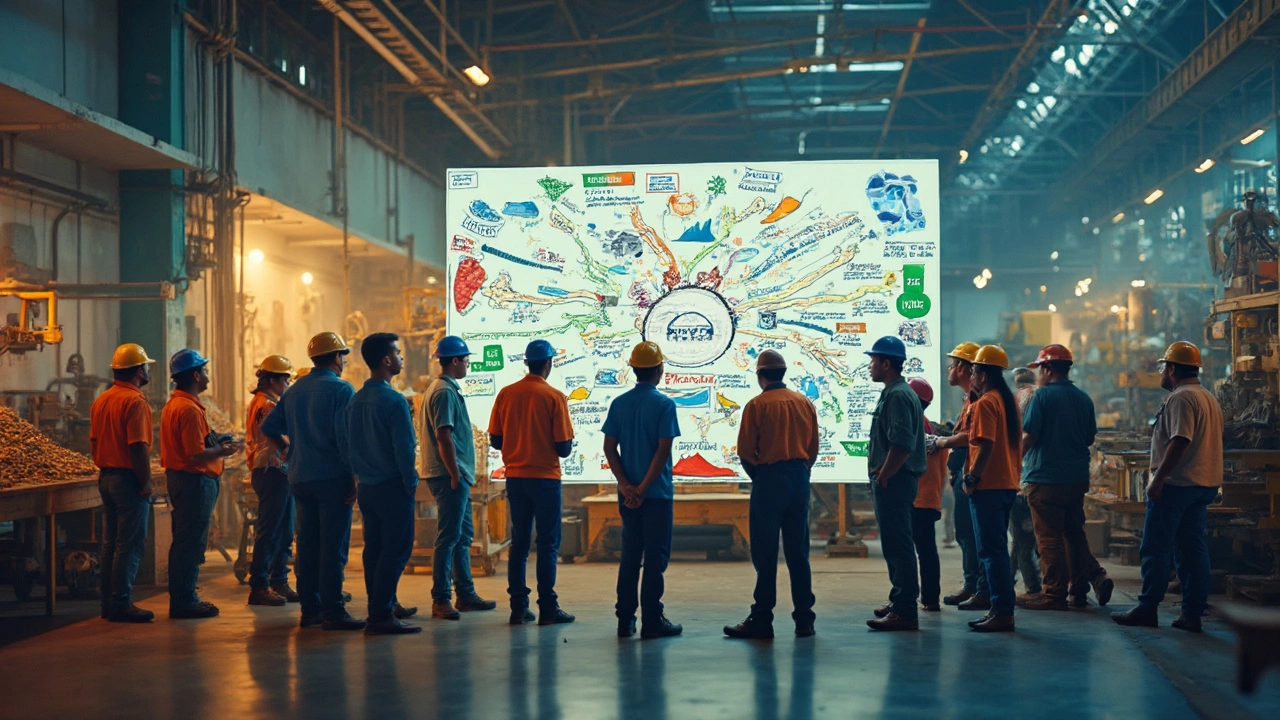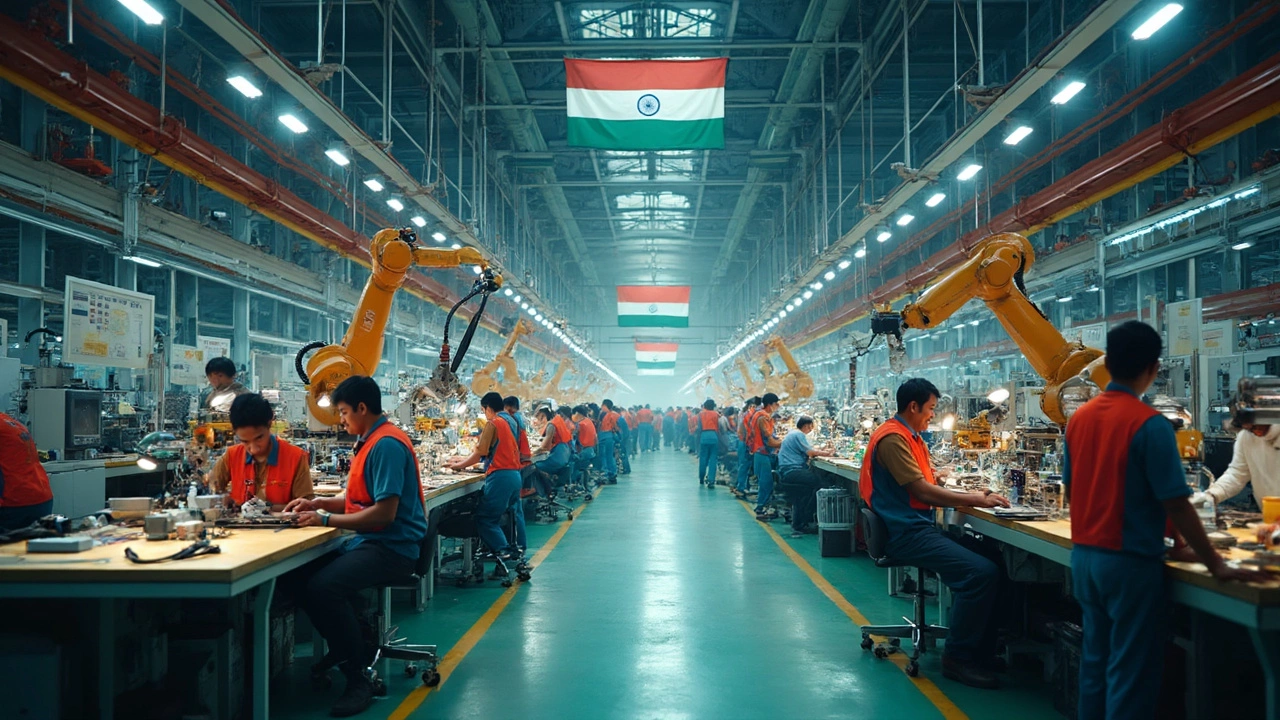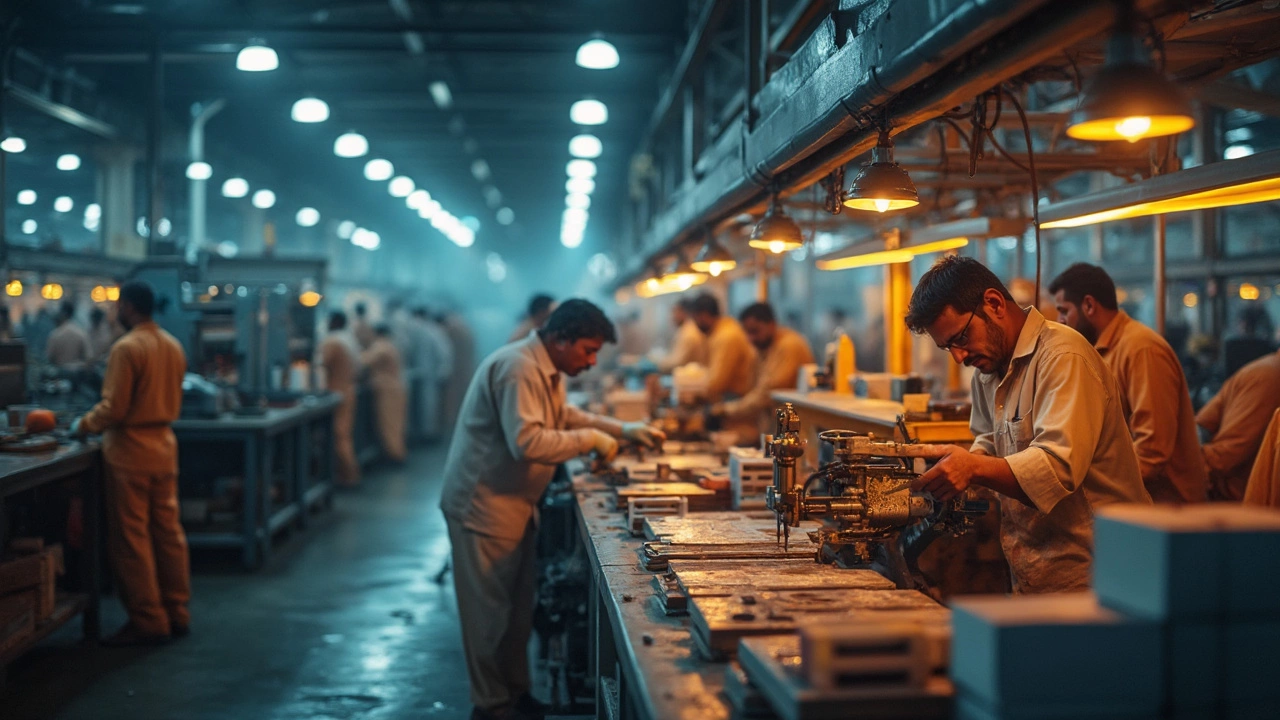Government Schemes for Manufacturing – What You Need to Know
If you run a factory or are thinking of starting one, the government has a bunch of programs that can cut costs, give you tax breaks, or even provide direct funding. These schemes are designed to make Indian manufacturing more competitive, and they’re easier to tap into than you might think.
Key Schemes Available Today
The most talked‑about programs include the Production Linked Incentive (PLI) scheme, which rewards companies for hitting export or production targets, and the Credit Linked Capital Subsidy Scheme (CLCSS) that subsidises the cost of plant and machinery. There’s also the Technology Upgradation Fund Scheme (TUFS) for newer tech and the AMRUT‑based initiatives that improve infrastructure around industrial zones.
Each scheme has a specific focus. PLI pushes high‑value sectors like electronics, pharma, and automotive. CLCSS helps SMEs modernise without draining cash reserves. TUFS encourages adopting clean tech, which can also lower utility bills. Knowing which scheme matches your product line saves time and paperwork.
How to Tap Into These Schemes
Step one is to check eligibility. Most programs require you to be registered under the MSME Act, have a GST number, and show a minimum turnover. Gather your financial statements, plant layout, and a clear production plan before you start filling forms.
Next, head to the official portal – usually the Ministry of Commerce or the Ministry of MSME – and download the application template. Fill it out honestly; false claims will stall the process. Attach supporting docs like product specs, export orders, or loan statements if the scheme asks for them.
After submission, a field officer may visit your facility to verify details. Be ready to show how the scheme will boost output or reduce emissions. If everything checks out, you’ll get an approval letter with a timeline for fund release.
Finally, keep track of milestones. Many schemes release money in installments tied to quarterly production targets. Missing a target can delay the next payment, so set up a simple tracking sheet and review it each month.
Pro tip: join industry groups or attend webinars hosted by the government. They often share updates, success stories, and shortcuts that aren’t in the official guidelines.
Bottom line: government schemes aren’t a mystery – they’re just another tool in your business kit. By matching the right program to your needs, filing clean paperwork, and hitting the required milestones, you can lower costs and grow faster.
Why is Manufacturing Dying? The Real Reasons Behind the Factory Slowdown
Manufacturing, once the backbone of local economies, is facing a steep decline. This article explores the real reasons factories are closing and jobs are vanishing, despite the parade of government schemes meant to revive them. We'll look at how automation, global competition, and changing policies shape this trend. Get straightforward tips on the role businesses and policymakers can play. If you've ever felt confused by headlines about the 'death of manufacturing,' this clears the fog.
How Much of U.S. Manufacturing Is Outsourced? Real Numbers and Surprising Impacts
This article digs into the real numbers behind U.S. manufacturing outsourcing and why so much of it happens overseas. You'll learn about the key industries affected, the big reasons behind the trend, and the sometimes-missed impacts on American jobs and government policies. Check out facts that will make you rethink where everyday products come from—and what the government is actually doing about it. Plus, get practical tips if you're a business owner or just curious about America's manufacturing scene.
Largest Manufacturing Subset in the US: Breaking Down the Numbers
This article digs into which manufacturing subset leads the US, explains how it got so huge, and shows why it matters for the economy. It uncovers how government policies fuel this growth, looks at trends since the pandemic, and gives tips for businesses looking to tap into this field. You'll also see some eye-opening facts about jobs, exports, and who really benefits from record investments in manufacturing.
Manufacturing Capital of the World: Who Really Leads?
Who truly owns the title of manufacturing capital of the world? This article looks at which country leads global manufacturing today and how they got there. It digs into how government schemes power this success, with facts and tips for businesses looking to get ahead. See how policies shape nations like China and India and what lessons others can learn. Find out what it takes to compete with the big players and grab a share of global production.
Manufacturing’s Role in Boosting America's Economy
This article breaks down the real impact of manufacturing on America’s economy, from job creation to tech innovation. It looks at how government programs back factories, what this means for local communities, and the role of skilled workers. If you’ve ever wondered why 'Made in the USA' still matters or how factories power the nation, you’ll find straight answers here.
Federal Definition of a Manufacturer: What Qualifies You Under Government Schemes
Curious if your business counts as a manufacturer for federal schemes? This article breaks down what the government actually means by 'manufacturer,' where to look for the official definition, and why it matters for grants and compliance. We'll bust some common myths and give straightforward tips for checking your eligibility. Understand the process and avoid missing out on benefits or falling foul of paperwork headaches. Everything's stripped down to the essentials—no jargon, just what you need to know.
6M in Manufacturing: Your Guide to Smarter Production
What is 6M in manufacturing and why does it matter for factories and startups? This article breaks down the 6M concept, showing how the framework shapes production and quality. Learn how each 'M' can impact your bottom line and what common real-life mistakes to avoid. If you're looking to improve efficiency or want to tap into new government schemes, here's the practical knowledge you can't skip. Straightforward tips and relevant examples make this an easy read for anyone in manufacturing.
Who Is in Charge of Manufacturing? How Government Schemes Shape the Industry
Who actually calls the shots in manufacturing? This article breaks down the role of government schemes, tracks who runs the show at different levels, and shares some real-world tips for navigating the system. Get the lowdown on major policies and learn how to spot key players, from ministries to grassroots agencies. Perfect for anyone trying to understand or benefit from manufacturing in India. Stay ahead by knowing exactly who's in charge and what it means for your business.
Best Manufacturing Country in the World: Is There a Clear Winner?
Which country leads the world in manufacturing and why? This article digs into specific facts, numbers, and real-world reasons why certain countries sit at the top of global production. We also look at how government support shapes manufacturing powerhouses. Expect practical tips for businesses and a breakdown of what makes a country truly excel in making stuff. Get ready to rethink what you believed about the world’s best factory floors.
Understanding the Three Types of Manufacturing
Discover the distinct approaches to manufacturing with an overview of the three main types: Make-to-Stock, Make-to-Order, and Engineer-to-Order. Learn how each method aligns with different business goals and customer needs, and gain insights into relevant government schemes that support these manufacturing processes. This guide offers practical information and tips for navigating the world of production methods.
Unlocking Value: The Impact of Every Dollar in Manufacturing
Explore the cascading impact of every dollar spent in the manufacturing sector. Discover how government schemes amplify this effect, boosting the economy. Learn practical tips on navigating these schemes and maximizing the benefits. Understand the intricate link between investment and widespread economic gains. This read demystifies how manufacturing and thoughtful spending can reshape economies.
Local Manufacturing: Impact on Community Dynamics
Local manufacturing can significantly reshape a community by creating jobs, boosting the local economy, and spurring innovation. It also fosters a sense of community identity and resilience in the face of global economic shifts. Moreover, government schemes play a pivotal role in supporting these industries, leading to lasting positive effects on local societies. Understanding these impacts helps in appreciating the broader influence of manufacturing on our daily lives.











